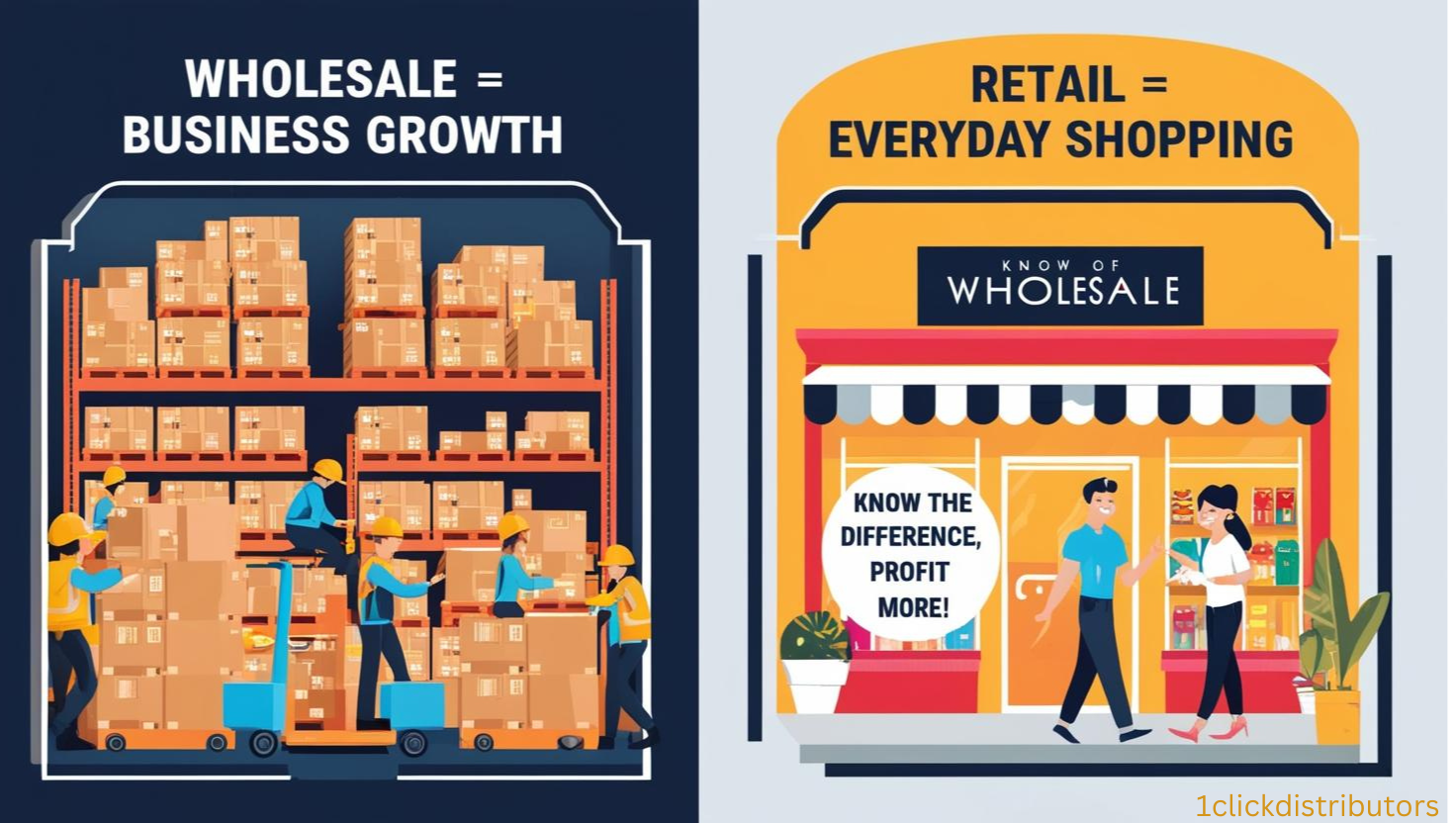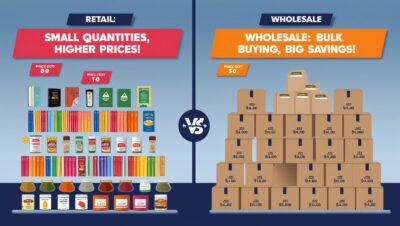Wholesale vs Retail : The debate of wholesale vs retail is crucial for businesses looking to establish their market strategy. Whether you are a manufacturer, supplier, or entrepreneur, understanding the nuances of wholesale vs retail can help optimize profits and streamline operations. This article dives deep into the comparison of wholesale vs retail, covering essential factors such as pricing, target audience, profit margins, and logistics.
What is Wholesale?
Wholesale is a kind of business model in which goods are sold in large quantities to retailers, businesses, or other wholesalers. The main purpose of wholesale is the supply of goods in large quantities with less cost per unit. Wholesalers act as the intermediary between manufacturers and retailers, ensuring that goods are delivered in an efficient manner.
Key Characteristics of Wholesale:
- Bulk Purchases: Wholesale involves large-volume transactions, reducing the per-unit cost.
- Lower Profit Margins: Since wholesalers sell in bulk, they operate on lower profit margins but benefit from high sales volumes.
- Business-to-Business (B2B) Model: Wholesalers cater to businesses rather than individual consumers.
- Warehousing and Logistics: Wholesalers require large storage spaces to handle bulk inventory efficiently.
What is Retail?
Retail is a process where goods are sold to consumers. Retailers sell goods in smaller quantities using physical storefronts, online platforms, and door-to-door sales.
Key Characteristics of Retail:
- Smaller Quantities: Retailers purchase from wholesalers or manufacturers and sell products individually.
- Higher Profit Margins: Retailers mark up the prices to cover operational costs and generate profit.
- Business-to-Consumer (B2C) Model: Retailers focus on individual customers rather than bulk buyers.
- Customer Experience: Retail businesses emphasize marketing, branding, and customer service to enhance sales.
Wholesale vs Retail: A Detailed Comparison
1. Pricing Structure
The main factor in wholesale vs retail is the price. The wholesale price is low because goods are sold in bulk, and the retail price is high since it involves one-by-one sale and also some overhead costs that include advertising and storefront.
- Example: A wholesaler may sell 100 units of a product for $500 ($5 per unit), while a retailer sells each unit for $10, making $1000 in total.
2. Target Audience
- Wholesale caters to business buyers, including retailers, resellers, and distributors.
- Retail focuses on end consumers, ensuring product accessibility through stores or online platforms.
3. Profit Margins
- Wholesale: Low profit per unit but high sales volume.
- Retail: High profit per unit but lower sales volume per transaction.
4. Storage and Inventory Management
- Wholesalers require extensive warehouse storage to manage bulk inventory.
- Retailers stock limited quantities, focusing on fast-moving consumer goods.
5. Sales Channels
- Wholesale: Operates through B2B transactions, trade shows, and bulk supply contracts.
- Retail: Sells through physical stores, e-commerce, and direct-to-consumer marketing.
6. Customer Relationship
- Wholesalers prioritize efficiency and cost-effectiveness.
- Retailers invest in branding, customer loyalty programs, and personalized service.
7. Marketing Approach
- Wholesalers rely on direct business deals and bulk purchasing agreements.
- Retailers use aggressive advertising, promotions, and social media to attract customers.
Case Study: Wholesale vs Retail in Action
Let’s analyze a case study of a popular fashion brand that utilizes both wholesale and retail models.
Brand XYZ’s Business Strategy
- Wholesale Model: Supplies bulk clothing to retail stores, offering competitive prices and ensuring large-scale distribution.
- Retail Model: Operates online and physical stores, selling the same clothing items at a marked-up price for direct consumer sales.
Results:
- The wholesale business secured long-term contracts with retailers, ensuring steady revenue.
- The retail business created brand loyalty, increased customer engagement, and drove higher profit margins.
Which Model is Right for Your Business?
Choose Wholesale If:
✅ You prefer bulk transactions with steady demand.
✅ You want to minimize marketing expenses.
✅ You aim for high sales volume with lower profit margins.
Choose Retail If:
✅ You want direct interaction with customers.
✅ You focus on branding and customer experience.
✅ You seek higher profit margins per sale.
Check our other amazing articles
Conclusion
The wholesale vs retail comparison highlights the fundamental differences between the two business models. Wholesale focuses on bulk transactions, lower prices, and high sales volume, while retail targets end consumers, ensuring higher margins and personalized service. Businesses must evaluate their goals, target audience, and operational capabilities to determine the best approach.


